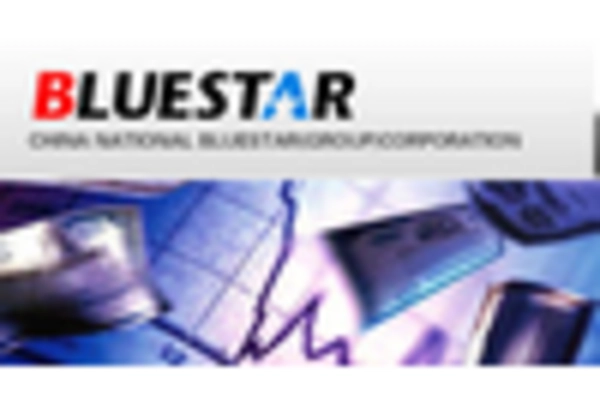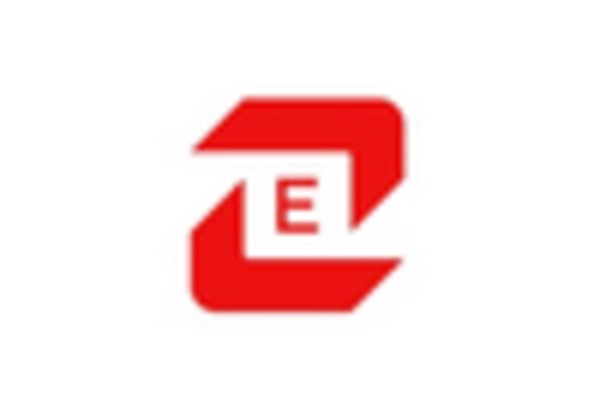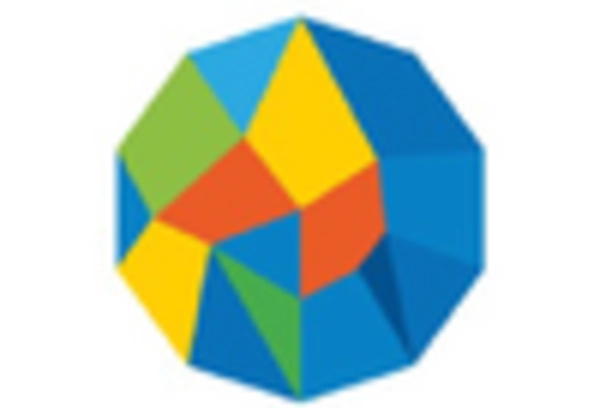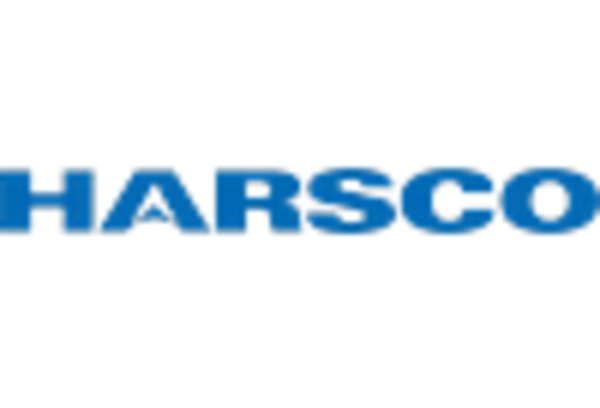Increasing Steel Production
The Ferrosilicon Market is experiencing a notable surge in demand due to the increasing production of steel. Steel is a fundamental material in various sectors, including construction, automotive, and manufacturing. As countries invest in infrastructure development and urbanization, the need for steel rises, consequently driving the demand for ferrosilicon, which is a crucial alloying agent in steel production. In 2025, the steel production is projected to reach approximately 1.9 billion metric tons, which indicates a robust growth trajectory. This growth in steel production is likely to bolster the ferrosilicon market, as it is essential for enhancing the strength and durability of steel. Therefore, the increasing steel production is a significant driver for the Ferrosilicon Market.
Infrastructure Development Initiatives
Infrastructure development initiatives across various regions are significantly influencing the Ferrosilicon Market. Governments are increasingly investing in large-scale infrastructure projects, including roads, bridges, and public transportation systems. These projects require substantial amounts of steel, which in turn drives the demand for ferrosilicon as a vital alloying element. In 2025, it is projected that infrastructure spending will reach unprecedented levels, potentially exceeding 3 trillion dollars. This surge in infrastructure investment is likely to create a robust demand for ferrosilicon, as it is essential for producing high-quality steel that meets the rigorous standards of modern infrastructure. Consequently, the infrastructure development initiatives are a crucial driver for the Ferrosilicon Market.
Technological Advancements in Production
Technological innovations in the production processes of ferrosilicon are playing a pivotal role in shaping the Ferrosilicon Market. Advanced methods, such as the use of electric arc furnaces and improved smelting techniques, are enhancing the efficiency and reducing the environmental impact of ferrosilicon production. These advancements not only lower production costs but also improve the quality of the final product. As manufacturers adopt these technologies, the overall supply chain becomes more efficient, potentially leading to a decrease in prices and an increase in market competitiveness. Furthermore, the integration of automation and data analytics in production processes is expected to optimize operations, thereby fostering growth in the Ferrosilicon Market.
Growing Demand from the Automotive Sector
The automotive industry is increasingly relying on ferrosilicon for the production of high-strength steel components, which is driving demand within the Ferrosilicon Market. As automotive manufacturers strive to enhance vehicle safety and fuel efficiency, the use of lightweight yet strong materials becomes essential. Ferrosilicon Market is utilized in the production of advanced high-strength steels (AHSS), which are crucial for meeting these industry demands. In 2025, the automotive sector is anticipated to consume a significant portion of ferrosilicon, reflecting a shift towards more sustainable and efficient vehicle designs. This growing demand from the automotive sector is likely to be a key driver for the Ferrosilicon Market, as it aligns with broader trends towards innovation and sustainability.
Rising Demand for Renewable Energy Solutions
The transition towards renewable energy sources is emerging as a significant driver for the Ferrosilicon Market. As the world shifts towards sustainable energy solutions, the demand for materials used in renewable energy technologies, such as wind turbines and solar panels, is increasing. Ferrosilicon Market is utilized in the production of silicon-based materials, which are essential for photovoltaic cells in solar panels. In 2025, the renewable energy sector is expected to witness substantial growth, with investments projected to reach over 1 trillion dollars. This growth is likely to create a heightened demand for ferrosilicon, as it plays a critical role in the manufacturing of components for renewable energy systems. Thus, the rising demand for renewable energy solutions is a vital driver for the Ferrosilicon Market.
















Leave a Comment